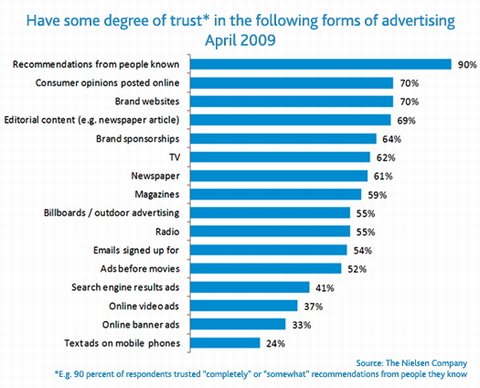What do consumers think about advertising? Is it broken? As I noted recently, “The 5 Truths of TV Advertising Effectiveness,” single source and syndicated ad effectiveness studies generally line up on the side of advertising continuing to be effective. But, as they say in NASA speak: “Houston, we have a problem.” And the problem is that consumers are increasingly telling us they are fatigued by and distrustful of advertising. How should brands respond?
Advertising Viewed Through Anthropology
The Associated Press and Context Based Research Group recently published an intriguing report: “A New Model for Communication: Studying the Deep Structure of Advertising and News Consumption.” The researchers used cultural anthropology methods to follow consumers from around the world throughout the day, observe their real world media behaviors, and question them about their attitudes toward news and advertising. This was an opportunity to go beyond hard numbers, to get insight into how consumers are thinking and feeling about advertising as a medium.
First, the news. Consumers feel bombarded by it, particularly the daily snippets and sound-bytes that provide basic facts and updates. Consumers felt these are necessary, but not sufficient. They also want the back-story behind the facts and to understand relevant “spin-off” stories. In short, they wanted news that provides depth and context.
What Consumers Say is Wrong with Advertising
Moving from news to ads, consumers expressed feelings of fatigue and distrust. There is just too much of it. It seems that if an ad can be served somewhere, it will be, whether consumers want it or not. And how does this leave consumers feeling? Taken advantage of.
Further, because of both its ubiquity and uni-directional nature, consumers are left feeling they are not in control. While advertising has never been seen as a high trust medium, the above factors work together to exacerbate the feeling that advertisers just can’t be trusted.
But, Advertising as a Necessary and Even Useful Medium
The learnings from the news world are also learnings that apply to advertising: consumers want more than to just be bombarded by advertising everywhere they go. Consumers recognize the importance of advertising and, in fact, even value the information and entertainment value that (some of) it provides.
And, they like sharing valuable information, some of which comes from advertising, with their personal networks. The research showed that consumers want to clear the clutter, regain control of the advertising information they receive, and reestablish trust with brands. This is reflected in how they actually consume media: they encounter ads, get over-saturated, investigate brands and information, and ultimately, share perspectives with peers when relevant.
5 Ways Marketers Can “Fix” Their Advertising
So, how can Marketers respond to consumers needs for an overhaul in the advertising environment, all the while respecting the fact that good advertising continues to work in building brands and business results?
- Deliver More Engaging Ads – Research shows that ads which are relevant, persuasive, entertaining and emotionally engaging work to build brands and sales results. Research has consistently shown that creative quality continues to be the dominant driver in marketing communications success. And the AP research reinforces that consumers actually like and value top flight advertising creative.
- Deliver Ads in Relevant Content – Consumers really do pay more attention to ads when they are more relevant. And relevance is higher when you place your brands ad in a program which has relevant context.
- Create a Conversation – Consumers are looking for more two-way communication. While Forrester research shows that less than 1/4 of consumers will actually participate in conversations with your brand, there is a substantial group who will. They want to share their opinions and feel like they matter.
- Make Sharing Easy – Many consumers want to share relevant information and opinions with their personal networks. Brands need to make it easy to do so. Facebook Connect and other tools will increasingly enable consumers to share their views on brands with friends and others as they traverse the web.
- Be Honest, Open and Transparent – The AP research shows that consumers want to re-establish trust with advertising and the brands behind it. To do so, your brand must be honest, open and transparent. Brands that tell it like it is, listen to consumers, and deliver on promises are more likely to rebuild trust in their advertising.
So, it seems advertising still works despite the shortcomings of the current advertising environment. This is an opportunity for brands. Brands which directly address consumers concerns about advertising have the potential to provide useful information, regain consumer trust, and build long term relationships.
Perhaps brands should even go so far as to tell consumers how they’re going to behave with respect to advertising. This would be a good first step in letting consumers know they’ve been heard and that brands are responding to the message.
The Blake Project Can Help: The Brand Positioning Workshop
Branding Strategy Insider is a service of The Blake Project: A strategic brand consultancy specializing in Brand Research, Brand Strategy, Brand Licensing and Brand Education





